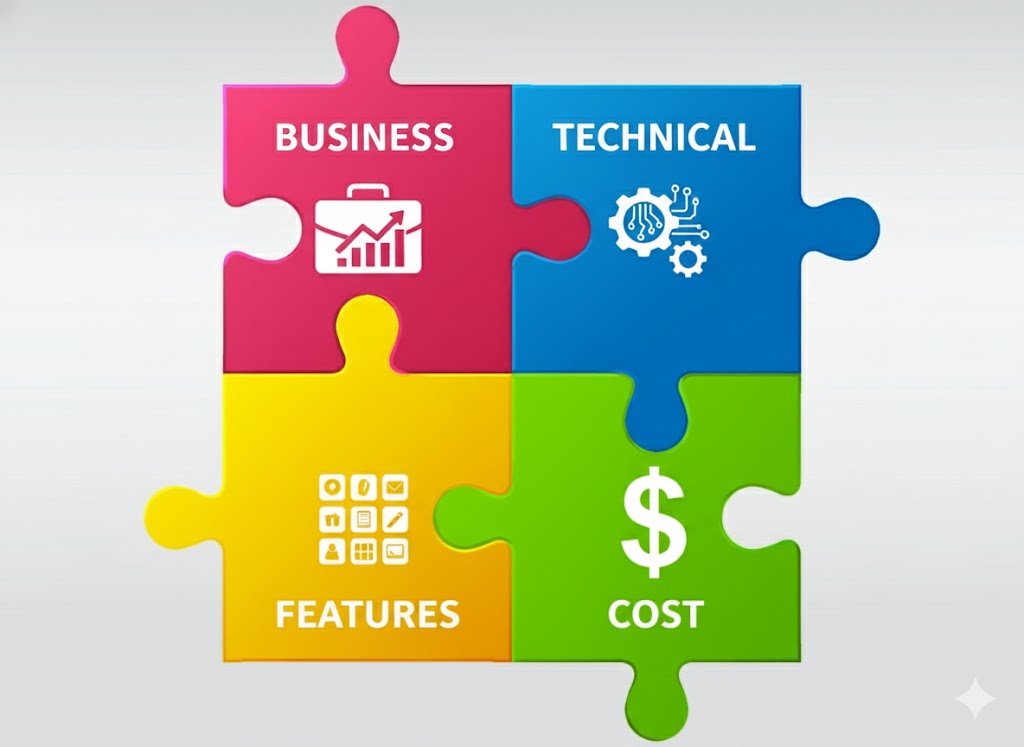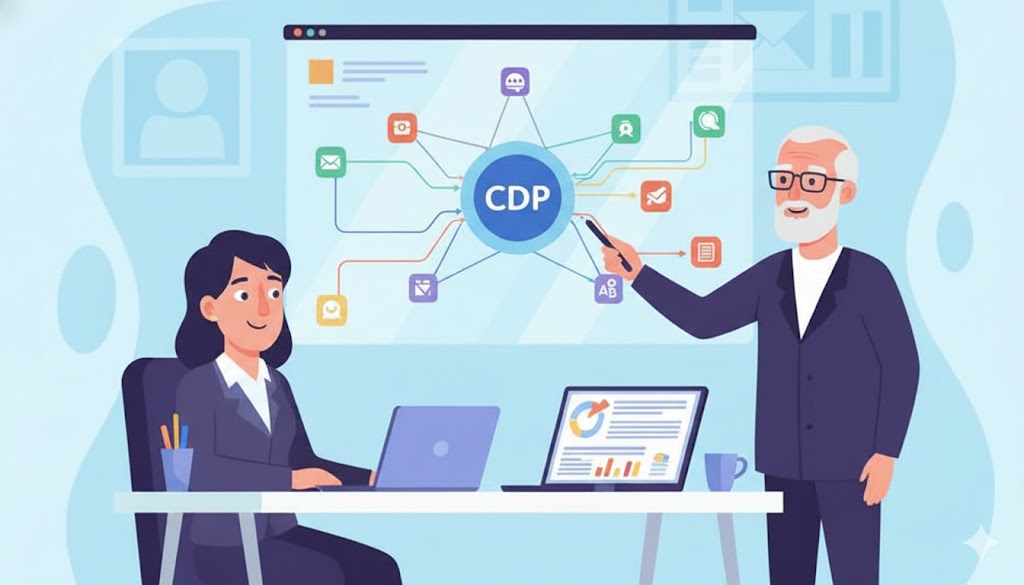
CDP Selection Guide: How to Avoid the Expensive Mistakes
Selecting a CDP is a high-stakes call. It affects your entire stack, your team’s workflow, and the quality of every decision you make. The wrong choice slows marketing down, burns budget, and forces you into manual workarounds. The right one gives you clean data, real automation, and a clear path to better ROAS and faster execution.
The fastest, safest way to make this critical decision isn’t through comparing features and functions. It’s hands-on experience with multiple projects that have succeeded and that have failed.
Let’s look one of our clients, Pat, and how bringing in McGaw and our CDP selection process let her make a confident decision that was the right fit across the board.
Key Points
-
If you’ve never implemented a CDP before, you run the risk of making expensive decisions
-
CDPs can over-promise their ability to replace, rather than augment, your existing systems
-
It’s critical to back your decisions with tactical use-cases, not just lists of features
-
Turn the sale process upside down by focusing on key differentiators before you start talking about pricing
-
Bringing in people with experience to navigate the complex world of CDPs is the #1 way to ensure positive ROI for your new CDP
How Do You Know If a CDP Can Really Automate Your Marketing?

Pat, a technology leader at an innovative FinTech company was facing a major problem.
The problem was growth.
They had an amazing playbook for marketing that drove 5x ROAS, but the labor was killing them.
Every time they brought in a new account, they had to spin up half a dozen new systems, build out all their ad campaigns and creative, and then support different tools. Pat was constantly spinning up new teams and couldn’t achieve economies of scale.
Pat researched her options and determined that a CDP could provide centralized orchestration, and put best practices in place that could be quickly replicated to accounts.
But she’d never implemented a CDP, and nobody on her team had ever used one, so as she researched and attended sales demos, she just got more confused.
Composable? Integrated? Reverse ETL? AI?
That’s when Pat reached out to McGaw for help. She needed someone who understood all these terms, knew the trade-offs, and could guide the process.
How Do You Define Your CDP Requirements?

We’ve done hundreds of CDP integrations, across multiple platforms, and we brought that expertise into the process.
This immediately gave Pat a shortcut, since we could jump straight into the details and quickly rule out platforms that weren’t the correct fit.
So we knew composability was key, the stack had to grow with Pat’s business and lots of custom developed systems they already had in-house.
And we knew automation and repeatability was very important. The system needed to be easy to scale across lots of accounts and channels with minimal effort.
We also knew that automating processes wasn’t the end-goal. It was the biggest challenge blocking growth, but this CDP had to maintain the company’s proven approach to marketing and communications. We didn’t want to trade efficiency for lower ROAS.
So rather than start with a feature matrix, we jumped into end-user use-cases.
- What was the playbook for marketing?
- What channels were they using?
- When they had a new account, what did they set up, and why?
- What was their secret sauce that scaled so well?
We needed to zero in on those best practices that made Pat’s marketing colleagues so successful.
And we also needed to tease out where there were gaps. What were the specific areas where the account teams were putting in too much manual work, making mistakes, and getting frustrated.
Then, with this clarity of business needs, we could move into technology. Again, focusing on understanding what existed today, and then discovering where there were gaps and optimization opportunities.
- How do custom apps and data structures drive the systems?
- Where are Zapier and other middlewares acting as “duct tape” to hold systems together?
- How does data actually flow between the CRM, the analytics platform, and the email tool?
- What specific data transformations are required before that data is usable for automation?
- Where are processes and fragile integrations going to break when they scale up and struggle under more load?
After these two workshops, we were able to use the proven VICE growth hacking framework to help us understand and prioritize needs based on their Velocity, Impact, Confidence, and Ease of implementation.
What a CDP Can, and Can’t, Replace in your Marketing Tech Stack

What immediately became clear is that Pat couldn’t replace everything with a CDP. She’d still need an email platform, a way to manage ads, and a data warehouse. A composable CDP drives your marketing systems but doesn’t replace them.
Because of this, there needed to be the same ability to replicate the setup of all the connected systems to truly streamline operations.
This is where our MarTech & Data Integration practice guides clients through the real trade-offs.
We looked at alternatives including all-in-one CDPs that did everything, but got rejected as jacks-of-all-trades/master-of-none. A custom solution was ruled out due to a higher total cost of ownership.
This created a new requirement: a phased roll-out, that would solve for the highest priority use cases, and put the company on a strong footing to automate more as they grew.
Out of the hundreds of CDPs in the market, this final requirement drilled us down to only a handful of options.
How Do You Turn the Vendor Sales Process to Your Advantage?

Now, with this short list, we were able to quickly focus on this short list of solutions that provided the sort of automated management APIs Pat needed.
This narrowed the CDP list down even further, focusing on Rudderstack, Hightouch, and Segment.
Now we flipped the sales process, coming armed with very specific requirements and nuances between the systems. This let us immediately start working with their solution architects to get to the nuances of each tool, rather than spend time on more-general demos and slide decks.
What were the limitations of the management API?
Where did automated management and replication fit into the product’s roadmap?
This got us down to a final differentiator: Infrastructure as Code, or IaC.
IaC lets you manage your whole technical environment using configuration files – like software continuous integration, but for your systems.
And it’s an open standard, adopted by lots of different tools, so it would provide that incremental enhancement of the stack. Provided the systems could be managed as code, or integrated into an IaC workflow via some custom work, Pat would be on solid footing.
Segment had a small edge here, but with some custom work, it would also be feasible to integrate HighTouch later.
What’s the Fastest Way to Achieve Value from your New CDP?

Our final deliverable wasn’t a 100-page report and feature matrix.
Pat got an actionable plan that stack-ranked the top two candidates for their CDP, as well as a set of vendor recommendations to consider across the rest of their stack.
This was a step-by-step manual to get them started with a limited set of use-cases focused on piloting a few new accounts.
By keeping this roadmap aligned with their use-cases, it also ensured that they weren’t just building tools, they were building value. Maintaining or increasing their ROAS and reducing a ton of manual work by eliminating anti-fragile practices through standardized best practices.
With an important step of bringing in Terraform to provide IaC automation across their stack.
In the end, Pat went with Hightouch, because the whole team got their demo and they liked the user experience, and the developers and data team liked how Hightouch integrated with their tools.
This is a great consideration, because usability and even just the “vibe” of a system can have a big impact on user adoption.
Pat also saw the need for CDP knowledge within the company, and brought in a new hire to head up the CDP integration and act as the long-term owner of the system. A critical role.
And now Pat’s on her way to achieving the 4x growth, and capturing $10 million of new revenue. And doing so with new levels of efficiency that will multiply profitability ahead of revenue growth.
Why Hands-On CDP Experience Prevents Expensive Mistakes

Pat made the right choice for her in bringing in people with hands-on knowledge of CDPs.
Experience didn’t just speed things up, it re-framed the decision and changed the outcome for the better.
Pat was able to cut out the significant time and expense of a full RFP and feature evaluation. She turned the sales process upside down and bypassed brochures, features, and promises.
She also managed to quickly clear away potentially-dangerous misconceptions about what a CDP was and wasn’t capable of
And she expanded her view to the full business, with use-cases that aligned business value with technical implementation, rather than getting siloed into a purely technical viewpoint.
Finally, thanks to the rigor of the process, she’s now armed with the innovation of Infrastructure as Code to build out a full automated technology organization when she’s ready to take that on.
So the next time you’re making a big stack investment decision, look beyond the brochures and demos. Find experts in your professional network, or reach out to a company like McGaw.
There’s no substitute for experience.
Leave a Reply